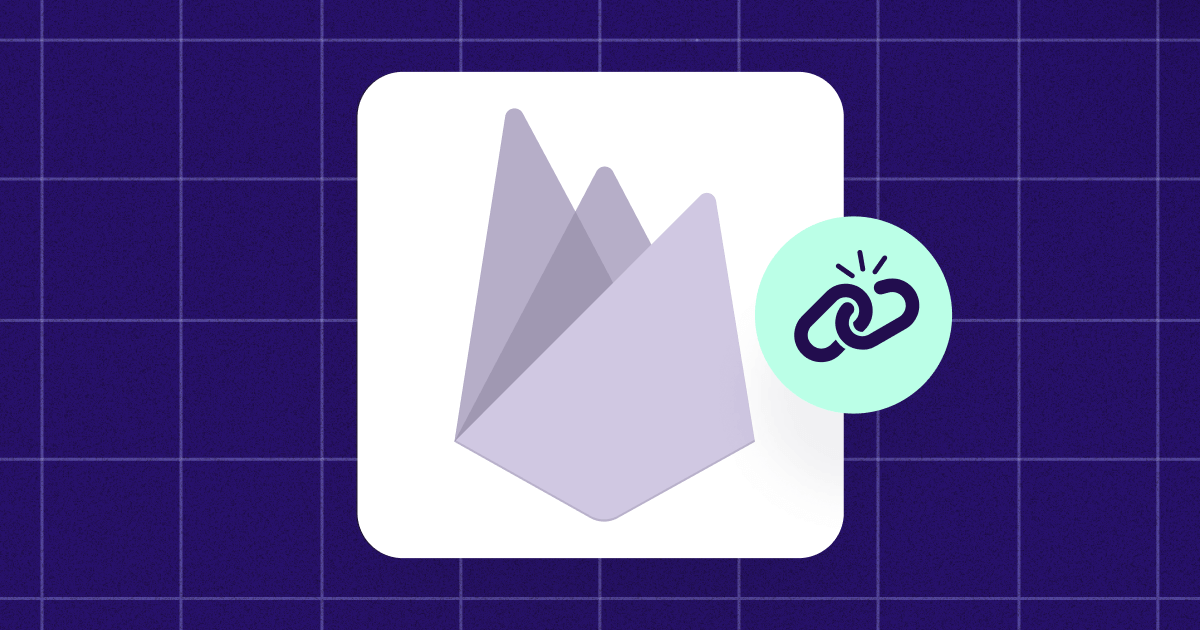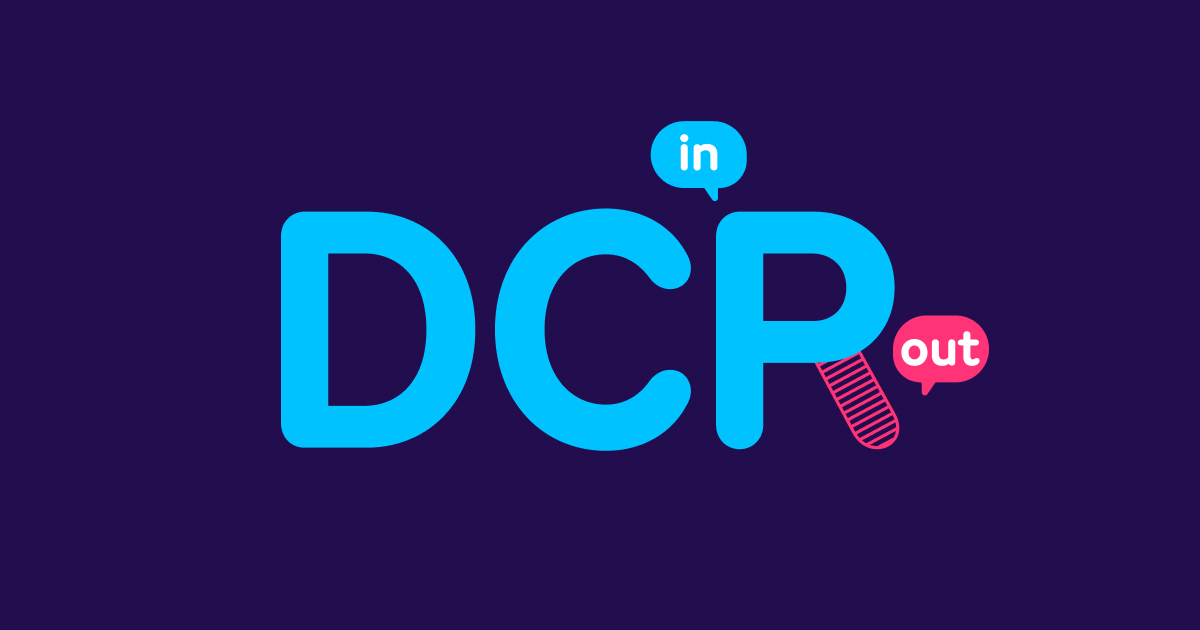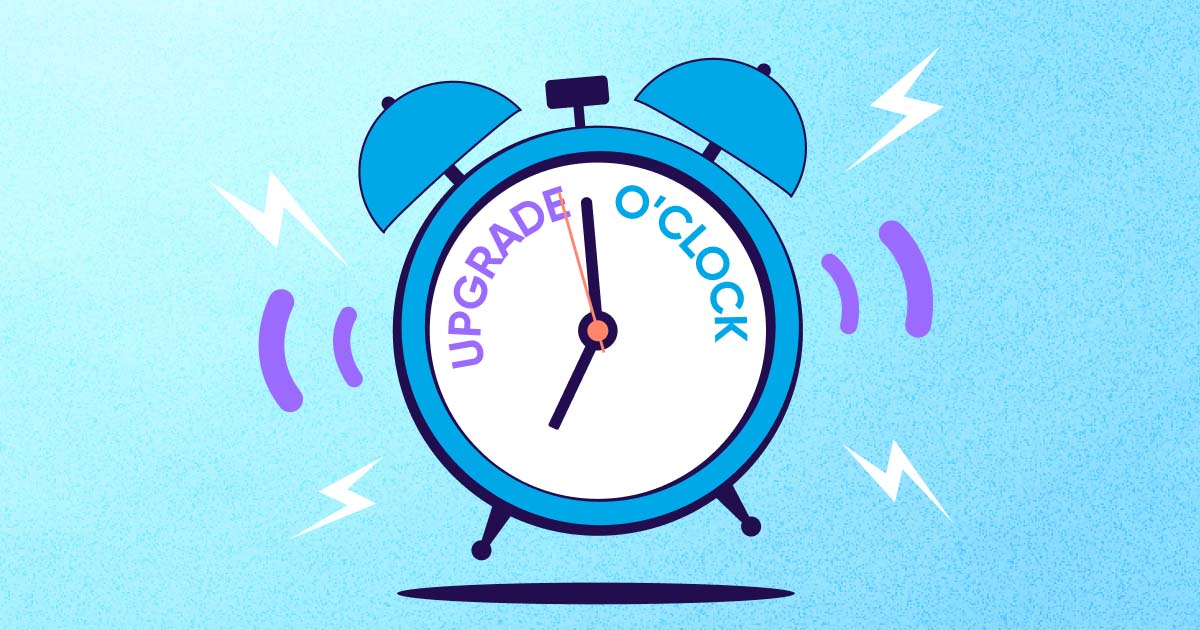
Touchdown! Fetch Super Bowl ad drives massive QR code engagement
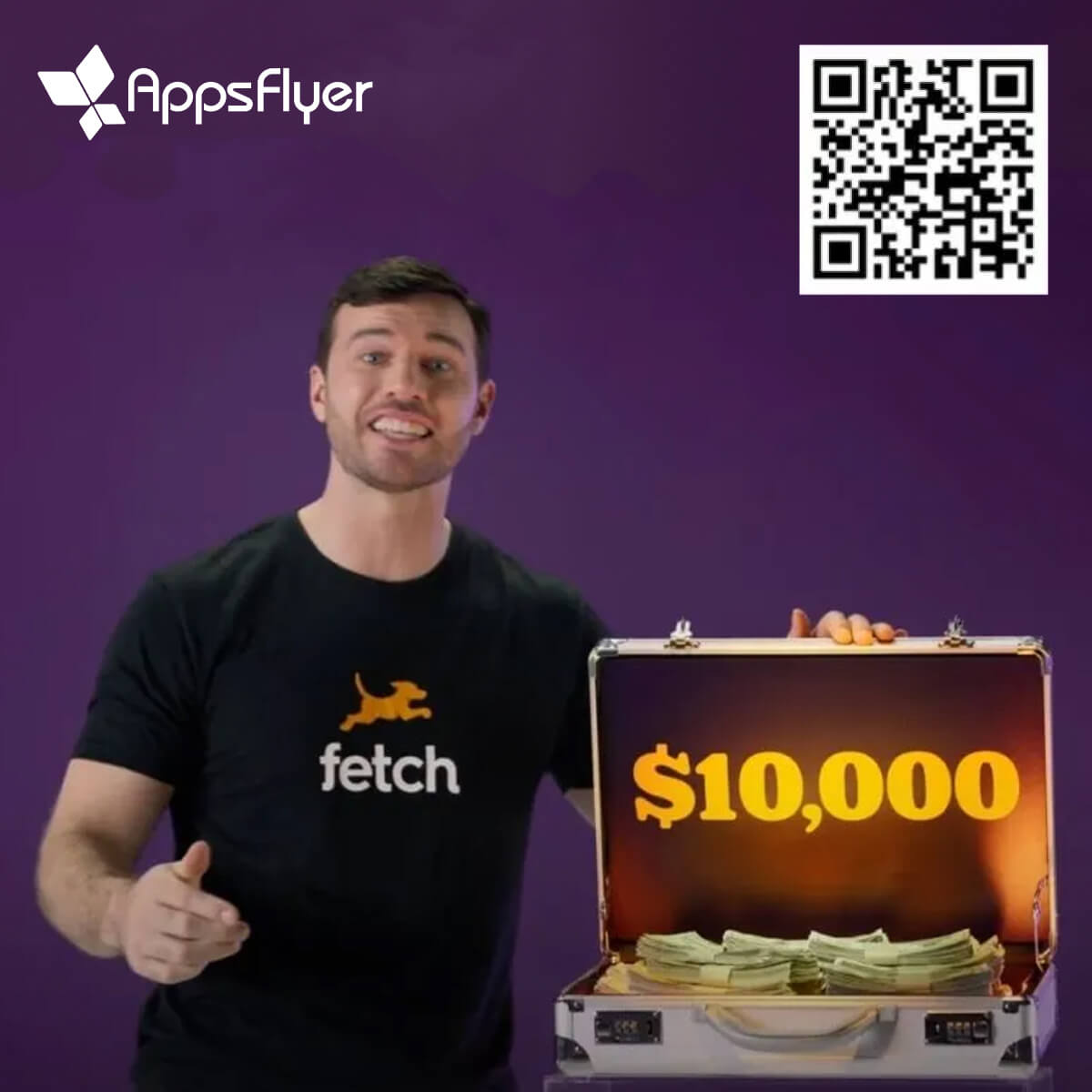
What if one simple tool could instantly turn TV viewers into app users? That’s exactly what happened at this year’s Super Bowl when Fetch leveraged the power of a QR code to drive real-time user acquisition on a massive scale. Fetch’s strategy of turning passive viewers into 3.2 million app visitors, ending up in 1.3 million sign-up delivered a massive success and measurable results for them, while facilitating a seamless experience for their users.
What if one simple tool could instantly turn TV viewers into app users? That’s exactly what happened at this year’s Super Bowl when Fetch leveraged the power of a QR code to drive real-time user acquisition on a massive scale.
QR codes aren’t just a trend-they’re redefining how marketers drive engagement and conversions. Unlike traditional advertising methods that require multiple steps for users to take action, QR codes provide an instant bridge between the physical and digital worlds. This seamless experience makes them a powerful tool for businesses looking to drive measurable growth.
With a phenomenal conversion rate of 81.33%—showing that the majority of Fetch ad scanners ultimately installed the app—QR codes provide an intuitive way to guide users exactly where you want them to go while delivering valuable insights into campaign performance. As demonstrated by Fetch’s Super Bowl ad, when used strategically, QR codes can create a seamless, high-impact marketing experience.
Inside Fetch’s winning QR code playbook
Fetch didn’t just rely on a QR code to drive installs—it built a strategy around it. By ensuring a smooth and intuitive user journey, the brand turned a simple scan into a powerful acquisition tool. Every element was carefully designed to remove friction, increase engagement, and maximize conversions.
1. Capturing Attention in Seconds
Fetch’s ad featured a clear call-to-action (CTA) encouraging viewers to scan the QR code for a chance to win in the $1.2M giveaway ($10,000 per second to 120 lucky winners). The simplicity of the approach removed distractions and created a direct path to action.
2. Seamless QR-to-App Experience
The QR code showed during the ad, providing a smooth user experience while linked, using deferred deep linking to ensure users landed in the right place post-install.
Once scanned users are redirected through AppsFlyer’s deferred deep linking, which dynamically determines the correct destination based on their device:
- iOS users → Redirected to the Apple App Store.
- Android users → Redirected to the Google Play Store.
- Other devices (or fallback) → Redirected to the Fetch Rewards website.
- If the user already has the Fetch app installed, the app opens directly instead of going to the store.
3. Maximizing Measurable Growth
Fetch received real-time data and could measure every scan, install, and post-install action, allowing precise attribution. By leveraging AppsFlyer’s QR-to-app deep linking, Fetch gained insights into user behavior and campaign performance.
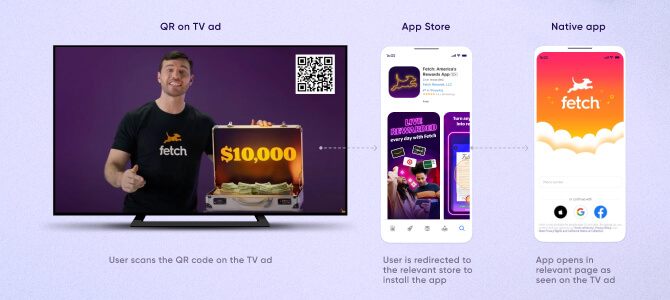
QR Code Use Cases for Marketers
Fetch’s success is just one example- marketers everywhere are using QR codes to connect the offline and online worlds. Here’s how:
1. Conversion & app installs
Customers are used to checking product reviews online before buying them.
A marketer can create QR code per product leading to relevant product reviews page on app and display the QR code next to corresponding product in store.
So once a client visits a physical store, the client scans the QR code. If the app is not installed, they are redirected to the relevant store. Upon launch or if the user already has the app installed, the product’s review page opens.
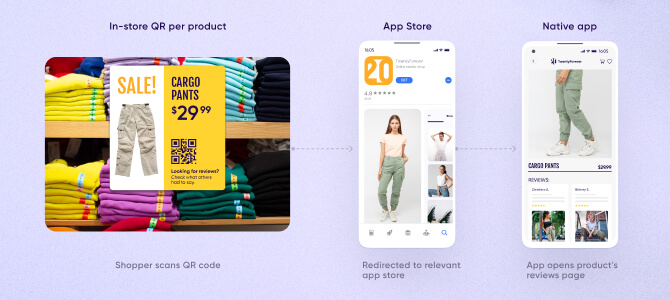
2. Increase brand loyalty
Customers who purchase your product don’t always engage with your app.
Marketers can generate a dedicated QR code for each item, linking to the product page in the app, and print the QR code on tags during production.
When a customer scans the QR code on a clothing tag, they will be directed to the app install page or the product page in the app store if they haven’t installed it yet. This allows them to reorder, leave a review, and shop for complementary products.
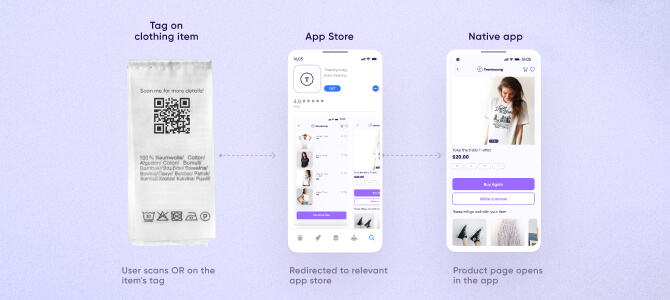
3. Offline store upsell
Brands want to increase customers’ basket value. By helping them understand the value, usage, and potential of these products, customers are more likely to purchase additional items.
Marketers can create recipe landing pages (LPs) featuring relevant store products and generate QR codes for each product in the recipe, linking to the appropriate LP. These QR codes can be printed and placed near the corresponding items in the store.
When a customer scans the QR code in-store, they are redirected to install the app if it is not already installed. Upon launching the app, they are taken to a page with a recommended recipe that includes the scanned product along with other complementary items available at the store.
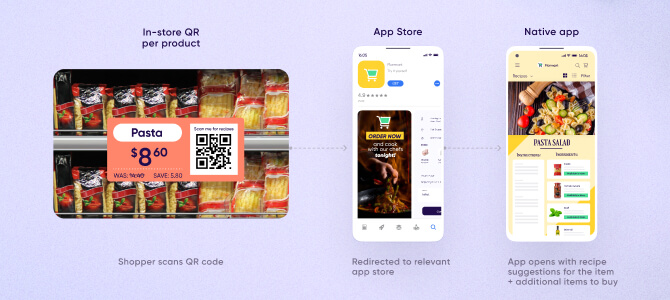
4. Desktop to app migration
Many customers still prefer using desktops to access financial services—around 57% in the U.S. alone. Banks with native apps aim to encourage users to transition to their app by migrating them from their most commonly used platform.
Marketers can add a QR code to the desktop website, directing users to the native app.
When a customer visits the bank’s website, they see the QR code with a CTA prompting them to get the app. After scanning the QR code with their mobile device, they are redirected to the relevant app store to download the app. Upon launching the app, users can seamlessly continue their journey within the app.
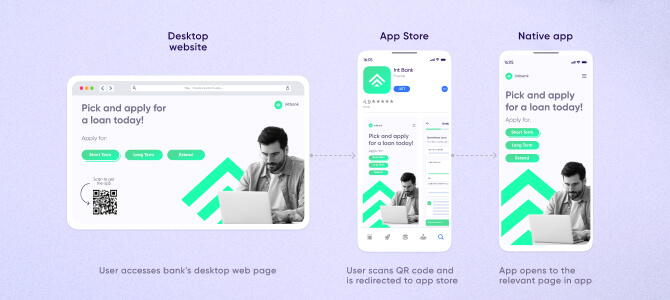
5. Out-of-home user acquisition
As games face increasing ad saturation in online channels, brands are looking to engage new and existing players through out-of-home channels while enabling quick and easy interactions.
Marketers can generate a QR code with a deep link to the relevant game and place it on a display billboard ad.
When a user scans the QR code, they are redirected to the relevant app store to install the game. After installation, players can start playing immediately.
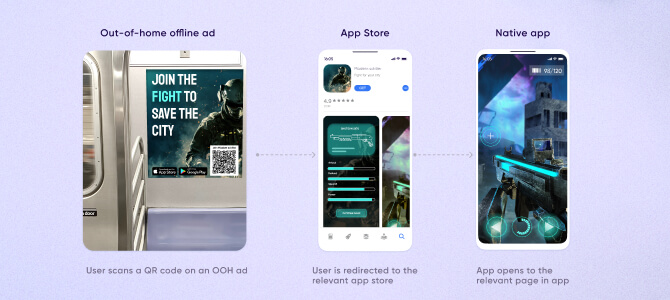
Key Takeaways: Why QR Codes Are a Must for Marketers
- Instant engagement: QR codes eliminate friction, guiding users directly to the app or relevant in-app experiences.
- Measurable impact: Every scan is trackable, allowing marketers to optimize campaigns in real time.
- Cross-channel versatility: From TV to in-store to packaging, QR codes seamlessly connect all marketing touchpoints.
Final Words: Get in the Game with QR-to-App Marketing
Fetch’s Super Bowl ad showcased the power of QR codes in app marketing. Whether you’re running a massive TV campaign or a localized OOH activation, QR codes offer a frictionless, measurable way to drive growth. Ready to leverage QR-to-app experiences? Let’s talk.


